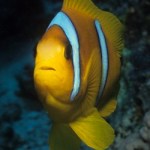introduction
Where can scientists collide gold ions at close to the speed of light; take photos of some of the smallest materials known to humans; decipher the structure of proteins vital to everyday life; illuminate the brains of drug and food addicts; and test materials developed for fuel cells and other clean energy technologies - all on one campus?
These things happen every day at Brookhaven National Laboratory, a (very) multidisciplinary, government-funded institution located on Long Island, about 60 miles east of New York City.
Every year, more than 5,000 researchers from around the world join the…
I may be a happily married woman, but I'm not immune to seduction - who is? So when a lovely woman named Erin came around offering to fulfill my wildest fantasies, I was intrigued, if a little nervous. She promised me the moon, deep stimulation, plenty of aroused excitement, the full range of delights. It was intoxicating. And so I allowed my self to be swept away by the titillation of more and bigger and deeper. She was even open (shocking!) to getting my honey involved (more on this below). And thus, I find myself here at Science Blogs, ripe and panting to begin. The lure of more…
New month, new topic here on Photo Synthesis: underwater photography.
For the next four weeks I will be presenting photos of marine invertebrates and fishes from warm water locations around the world. These photos are the product of what has been, for me, a long journey of discovery -- about the sea, about marine life, and about photography.
My photos are documentary in nature, rather than works of art. That is not to say that I don't strive for a certain level of eye appeal, but my purpose always has been to record which creatures live where, what they look like in their natural…
I'm Walt Crawford. This is another blog in ScienceBlogs' new Information Science channel. As with the pioneers, John Dupuis and Christina Pikas, it's not a new blog.
And as with those two--both of whose blogs I've followed for years--I was pleasantly surprised when ScienceBlogs contacted me, in the person of Erin Johnson. I was maybe a little more surprised, since I'm neither a science librarian nor, technically, a librarian at all. (I don't have an ML[I]S and am exceedingly unlikely to get one at this point, barring an honorary degree.) I've been hanging around library and information…
As the sun sets on a wonderful set of insect photos from the Wild...
I thought I should start with a transition photo, on a photosynthetic bug bed, to a new photo theme - rockets:
Many insects have served as brave cosmonauts - flying as a somewhat unwilling payload in Estes rockets. The National Association of Rocketry has rules against living payloads, but they make an exception for invertebrates. (I think the intent of the rule was to prevent kids from flying their sister's pet, but to allow for some curious exploration.)
The Quark is the smallest rocket I have built, with rear-swept…
Here's some exciting news. Starting Monday, our Photo Synthesis host will be the multi-talented Steve Jurvetson. Steve will tell you that his main thing is rockets, but a bit of snooping about reveals that he's also a closet myrmecophile. But really. Who isn't?
I'll continue posting through this weekend, after which the bugs return to Myrmecos. But I hope you'll join me in sticking around for a fast month of rocket-blogging.
Welcome to ScienceBlogs' new photo blog, Photo Synthesis.
While doing our usual browsing of the blogosphere, we've become aware of the vast number of excellent blogs featuring science imagery, from neural networks captured with a light microscope to images of supernovae billions of light-years away. To take advantage of this wealth of visual content, we've decided to host our favorites here on ScienceBlogs, with a rotating line-up of photobloggers we'll select monthly.
To start us off, we've selected a photoblogger whose subjects are small but magnificent: The members of the class Insecta.…
